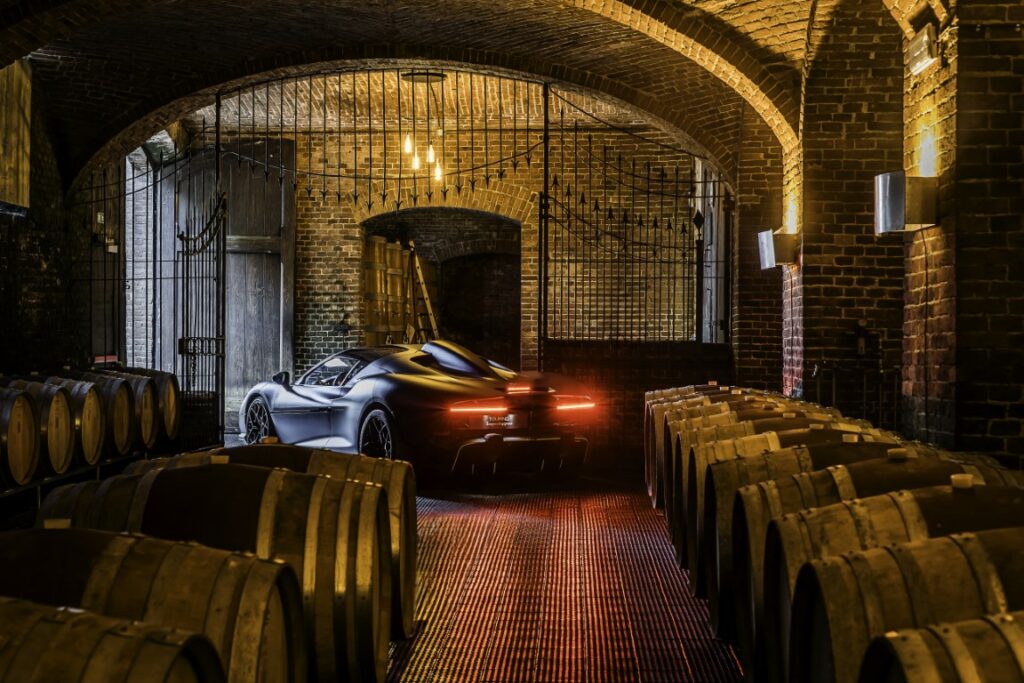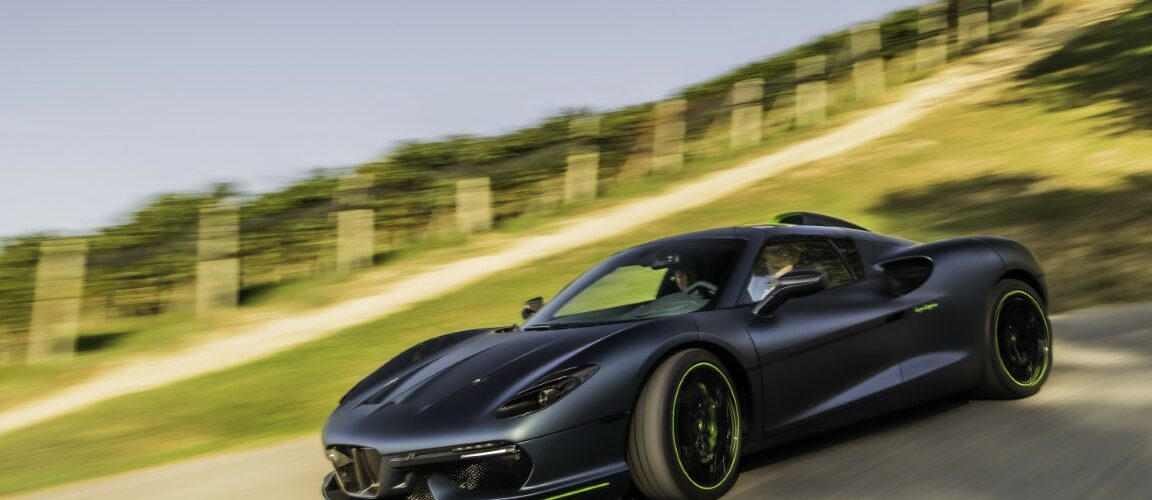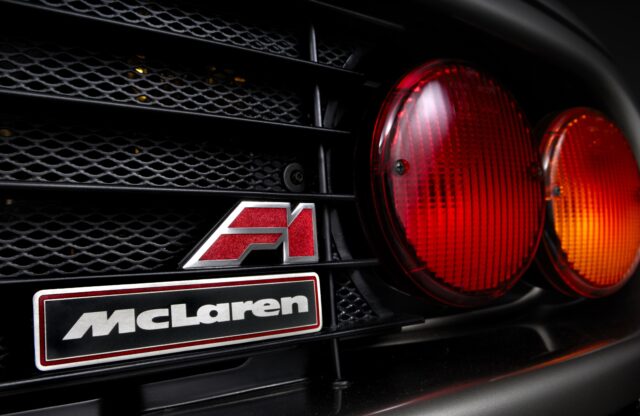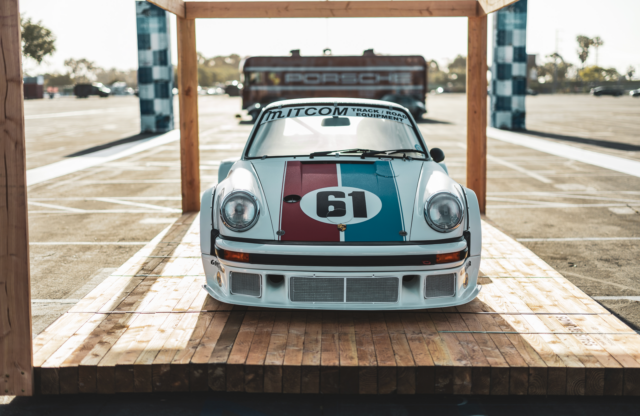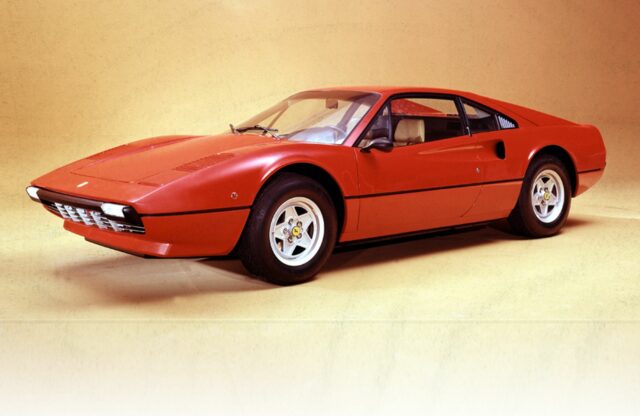They call it white gold in this corner of Italy, a land where vines cling to improbably steep hills, fed by a unique soil on land fiercely protected by UNESCO.
It’s truffle season in Alba, located in the Piedmont region and the midpoint between Turin, Milan and the Mediterranean. The distinctive mixture of soil and climate makes the truffles here so revered that, for just a few weeks in October and November, the population swells from 30,000 to 300,000, with worldwide truffle aficionados flocking to sample not only the white gold but also the exceptional wine produced in the region. It’s also eye-searingly beautiful here…
Frankly, it’s tempting just to stand among the vines and absorb it all. However, it takes one enthusiastic blast from the all-aluminium, twin-turbocharged Ferrari F154 V8 behind my head to focus the mind; I’m here to celebrate the newly refreshed Touring Superleggera Arese RH95 and the similarly revised Touring Superleggera itself. The recent past has seen a new Touring CEO in the guise of Markus Tellenbach, as well as a new head of design, Matteo Gentile – and a major contract to construct the new Alfa Romeo 33 Stradale.
“We have taken time to clean house, reorganise, restructure and bring in fresh people and expertise that are going to be helpful for our journey,” Markus explains. “It’s been a year of preparation, in many respects – 2026 is our 100th anniversary, after all.”

The refreshed Arese RH95 reflects the finest things in life – as does the similarly revitalised Touring Superleggera, the legendary name behind this most exquisite of GTs
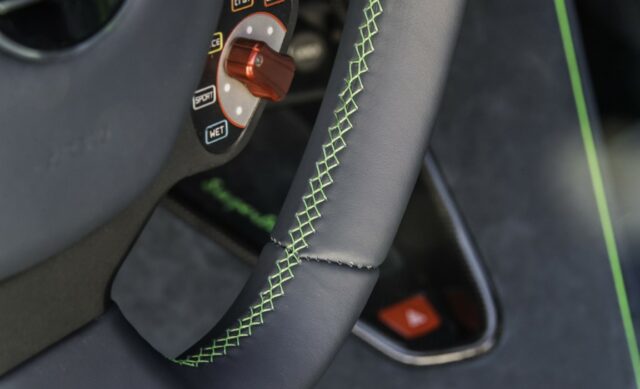

However, it is winning the Alfa contract that has largely defined the first year of his tenure. This has meant a new factory in Rivalta, Turin, as well as more staff. “Building 33 cars is not going to happen in a couple of months, and it is quite an adjustment in terms of structure and staffing to have the capacity to do it,” he says.
Touring was one of several coachbuilders in for the Alfa Romeo 33 contract, but it was the firm’s work with the Arese RH95 that ably demonstrated its abilities. As Markus explains: “The conversion of the Ferrari 488 to an Arese RH95 is exactly the same process as converting the Maserati MC20 to an Alfa 33 – Stellantis could see our work on the current model we are producing, and its quality. This was the biggest advantage Touring had over anyone else.”
Of course, some might view building a limited-production mid-engined supercar for a third party, while also offering a mid-engined supercar under your own brand, might be a conflict of interest. Markus doesn’t see it that way.

“As a small company in a transformational period when all the big car companies don’t really know at what pace they have to swallow, adjust and reorganise according to legislation, consumer preference and supply issues, it is important for us to have a safe foot on the ground,” he says. “When I took over, it was key to establish a base operation that is stable for the next couple of years and provides confidence to our employees and customers. Some similar companies – well, we don’t know whether they are going to make the next quarter. Having an OEM contract is kind of like a stick in your back that holds you during the next couple of turns.”
One of those turns is, of course, developing Touring Superleggera as a brand in itself. “Clearly the more emotional part is somewhere [other than our OEM work], but that OEM work is needed to absorb and mitigate the risks of our own visions, views and plans,” Markus continues – and those plans involve a sharp return to the kind of automotive style Touring Superleggera is more readily associated with.
“Our heritage doesn’t work with mid-engined cars – it’s that simple,” he admits. “Mid-engine equals performance, and historically Touring has never been about lap times or track days.”
As I guide the updated (and obviously mid-engined) RH95 with a spirited crescendo of speed, sound and excitement around the tight, twisty roads that spiral through the hills, I can understand. The Ferrari 488 base materials have largely been left unchanged, which means the car is invigorating, intoxicating and entertaining. However, I’m here to chase down truffles and sample great wine, and you can’t get many cases of either into the RH95. It’s that kind of lifestyle which plays closer to Touring’s heritage, rather than nailing an apex.
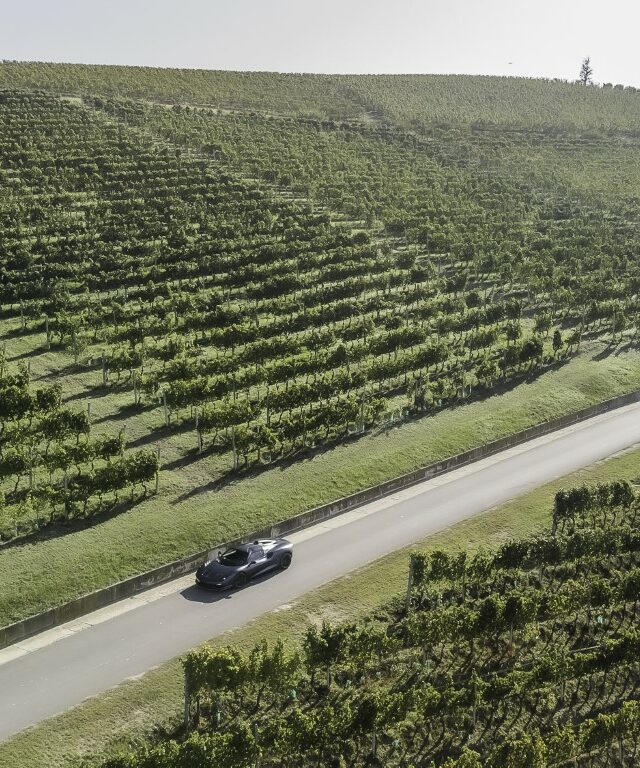
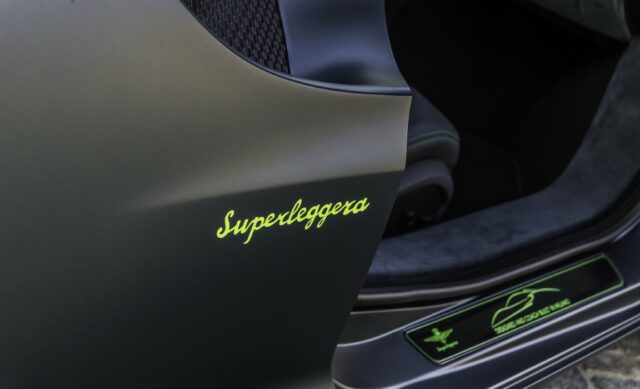
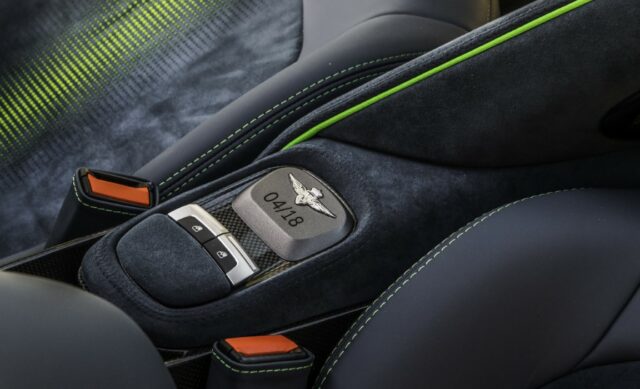
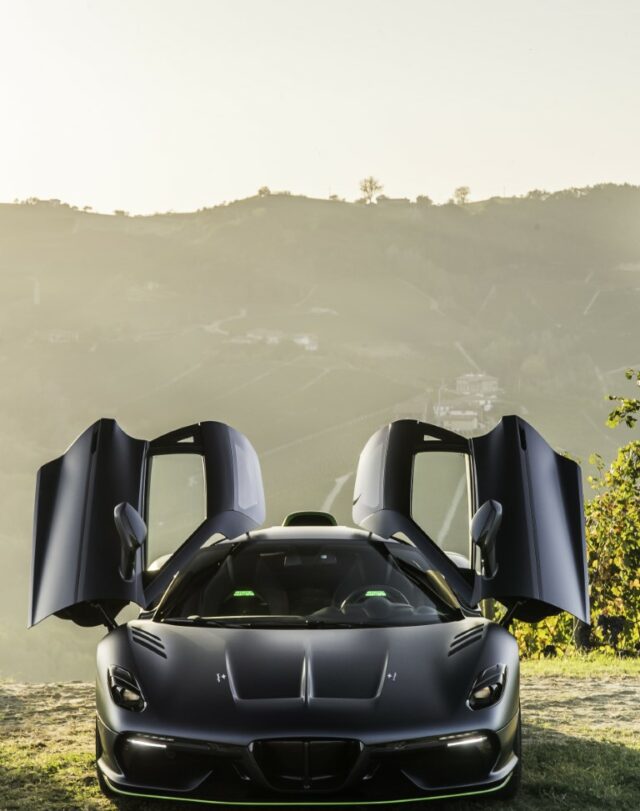
As I pull into the grand locale of the Ceretto winery, one of Italy’s greatest and most revered vineyards, it’s a chance to reflect on the much more important aspect of the car: the way it looks, and thus the way it makes me feel. It’s a stark contrast to the base materials – the 488GTB may be brutally effective in conveying its performance potential, but it’s not exactly elegant.
The RH95, complete with sensuous hips, smoothly contoured nose and carefully disguised functional elements, harks back to an era before this one, when aesthetics are seemingly an afterthought to lap-time supremacy. It immediately feels special, individual, exquisite and highly personal. In a modern world when just about anyone can rent a Ferrari, let alone buy one, to sink into the RH95’s form is to be granted a glimpse into a more emotive, exclusive world.
It’s a similar approach to that which Ceretto takes with its wines. Its story began in 1937, but Bruno and Marcello Ceretto’s fresh look at vinification in the 1960s helped elevate the firm’s reputation to its current heights. The brothers observed how French wine producers operated, and saw the potential of the local Piedmont grapes. They selected and purchased plots in the very best areas, crafting wine from only the 170 hectares of vineyards it owned. Over the decades, and more recently under the watchful eye of our host Roberta Ceretto, the results are exceptional wines that have attracted the appreciation of artists and writers – the arts are another Ceretto family passion – as well as the likes of Giorgetto Giugiaro and the Elkann family. The 2014 Barolo comes highly recommended…
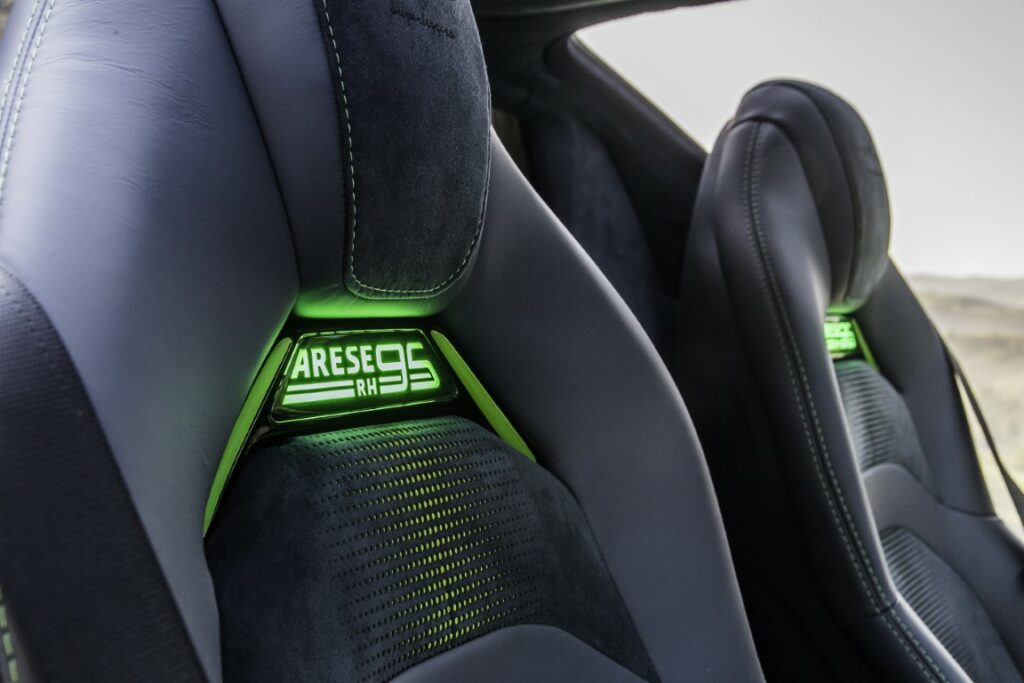
Much as the great wines evolve gently over vintages, the latest RH95 is more a refreshment of the original concept. There’s a new approach to interior textures and, of course, a new colour – Grigio Artico, offset with a vibrant green highlight. It’s all part of a new Tailor Made programme within Touring Superleggera that leverages VR and 3D rendering alongside the brand’s traditional coachbuilding skills.
Leading this mixture of old and new approaches is design boss Matteo Gentile. Although he has worked for brands with a more maximalist approach to exterior styling, such as Bugatti, Lamborghini and, more recently, Lotus, he is very clear on what Touring Superleggera’s place in the design world is.
“The philosophy of Touring can be summed up in three words: intelligent, soft and elegant,” he explains. “With those concepts in mind, we do our best to interpret it with the brands we are working with. On the other hand, Touring Superleggera has to develop its own presence and identity.”
Matteo is looking to bring back the traditional Touring essence as a producer of elegant front-engined GT cars, although split between two different philosophies: “We will have the ‘concours line’, a purely elegant design that will show off Touring’s DNA in the strongest way, particularly in the side view. We will also have a ‘performance line’, which will be slightly different but will stay true to the words of elegance and glamour. This won’t be ‘racing’ – let’s call it a progressive sportiness.”
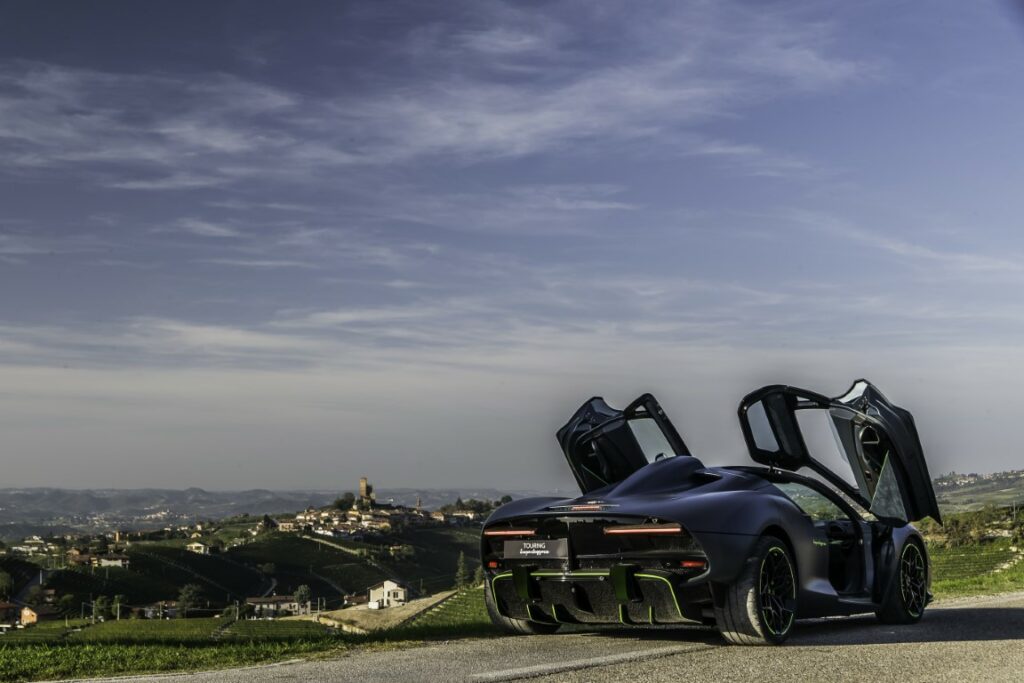
He draws some of his inspiration from Como. “For me, Touring is like driving around Como – it’s one of the best places for a Touring car, like seeing a lion on the savannah,” he chuckles. “Every Sunday I go there. I love the lake; it gives me time to think about the designs. It’s a very natural environment.”
Balancing design purity with a numbers-led engineering arms race and maximum aerodynamic gains has seen automotive exotica take an aggressive turn for other manufacturers. For Matteo, the balance is simple: “With Touring I am lucky to design a piece of art – performance is not the target. Of course, I will not create holes that will compromise downforce, but I will not go to extremes to make sure it’s the ultimate track car. We will not do things where form follows function, but function often follows form in art – although it’s not simple to define what a piece of art is.”
Matteo comes from design studios where clay modelling is being phased out in favour of cutting-edge technology, and he’s bringing what he’s learned to Touring – although, as he passionately explains and demonstrates over lunch, it all starts with a piece of paper. “I’m a 3D [design] guy, but I love to sketch – if I don’t do it for a few days, I go mad. Sketching will always stay, that’s for sure,” he laughs.
“However, just thinking in 2D, sometimes you have limitations. The funny thing is, when you work in 3D and you come back to 2D, you are enhanced with the ability to solve some problems. It’s a ‘ping-pong’ type of sequence, both empowering each other.”

While 3D modelling is not new, the use of VR CGI is. “I’m pushing for it a lot, because the software and technology are now reaching photo-realistic levels,” Matteo says. He uses Unreal Engine, more commonly known for computer gaming, to render ideas. “In one day we can configure the volume, have a few more sketches, then configure the volume again and, at the end of the day, visualise it in a 3D space with a realistic-looking photo.”
Aside from the clear advantages in terms of cost and time savings, it also helps to make the crafting of a truly bespoke car much more collaborative with the customer, wherever they are in the world. “It’s extremely helpful because, in a few days, we can evaluate a lot of volumes, understand the right direction and show the customer something that is 90 percent close to the final product,” Matteo explains.
“For us it is nice to take them into part of the process, and build their dream. We’re fortunate that our customers have great taste; we are guiding them, they are guiding us. I think it will be the perfect combination between technology and Touring’s tradition in the future.”
Both Matteo and Markus remain tight-lipped on what those plans are – even several glasses of Ceretto’s finest cannot loosen the grip of non-disclosure agreements – but you can expect to see what Touring has up its sleeve at The Quail, A Motorsports Gathering in 2024.
However, any future developments must be done in close collaboration with a manufacturer. “The old coachbuilding model, the romantic idea of selecting a capable donor, then taking it apart and building something much nicer, is impossible,” Markus says. “Now we have connected services, six-year warranties and OEMs moving to being ‘service providers’.

“It’s impossible for Touring to create a vehicle that would have a lower amount of functionality and services than the donor, because the call centre would not answer the call. We can only successfully build with a platform supplier working hand in hand with us.”
Of course, those platforms will be increasingly taking the EV route; Markus believes Touring’s customers are pragmatic on the subject: “I think we’ll see collectors who have two hearts in their chest – they’re collecting icons and at the same time they buy performance. Those with the fascination of speed realise that time is moving on, and if speed is generated by electric power, then so be it. But we have others who come to us and say, we want ICE, and nothing else. For Touring, for the next few years, we’ll try to leverage our past and provide a GT for several segments of the market.”
One market sector that will be avoided is SUVs, although Markus admits it’s something he did consider, before rejecting it on the basis that they’re too ‘everyday’ for a Touring project. “However, Touring’s expertise could be used to ‘help’ the design of an existing car – the Aston Martin SUV is a good example,” he chuckles.
Given Touring Superleggera’s close history with Aston Martin – “We designed the world’s most famous car!” he laughs – it does beg the question as to whether there could be a future collaboration, but again his lips are sealed. “I’m Swiss: I’m neutral on the matter,” he smiles.
That neutrality applies to Markus’s view on another big subject in the coachbuilding world – Continuations, or perhaps even restomods. Does Touring’s vibe correlate? He appreciates what Singer has done – he grew up with 911s – and admires its success. “It’s an appealing product, and Singer’s approach seems to resonate,” he says. “I would be very happy to make a business model along the lines of what Singer does – I wouldn’t rule it out.”

Speaking more generally about the future, Markus is keen to widen Touring’s scope. “For our portfolio I can well imagine an entry-point model that is below the 6000 hours it currently takes Touring to build a car, for a product that takes 3000 hours,” he says. “I’d like to reach out to a younger demographic, to establish the name in a wider group of aficionados, a group that is below the hardcore buyers of a €1.5m car. The idea is in its early stages, but we need to go for a project for younger buyers, who had poster cars of the 1980s and ’90s on their walls.”
This, of course, brings its own challenges. With the predominant styling trend among hypercars and the wider enthusiast market aiming towards the aggressive, how can Touring’s three pillars of softness, elegance and intelligence stand out?
“Marketing only flies if it’s true, and that means you have to respect your DNA,” Markus smiles. “I think we will be capable of finding customers who resonate with style and elegance, and have an appreciation for creating an object. It is a niche, but Touring has always been about addressing this niche.”
After a couple of days with the RH95, it’s a niche I can well understand – even if its mid-engined nature doesn’t sit with Touring Superleggera’s future. As a visual experience, it invigorates the soul in a way supercars used to.
Much like the truffles, shaved over lovingly hand-made pasta, accompanied by a synapse-sizzling fine wine, it’s a taste of the truly special that should be cherished. If the RH95 experience is carried on to the future of Touring, that’s something worth raising a glass to.
